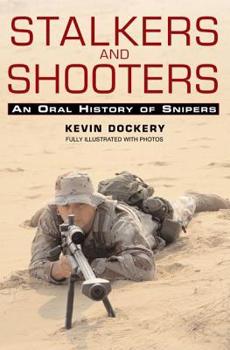Stalkers and Shooters: A History of Snipers
Select Format
Select Condition 
Book Overview
Meet Mirabelle and Mr. Muller--an irresistible Boston terrier and her devoted owner. They discover the joy of the simple and the pleasure of the everyday--playing catch, chasing a butterfly--in a fresh, appealing new series of board books. With her oversized head, black-and-white features, and round, wide-set eyes, Mirabelle is the most expressive of dogs. She looks inquisitive, feisty, happy, smart, and eager. Eager for what? For adventure! Together with her owner, Mr. Muller, in his bow tie and big eyeglasses, Mirabelle fills her days with activities like playing catch with a red rubber ball or going for a late-afternoon walk and stopping at an ice cream truck. Mirabelle and Mr. Muller know what every little kid knows-- the simplest thing can be endlessly fascinating and fun. The smart look of the Mirabelle books is as original and iconic as Mirabelle herself, combining strong black lines, bright spots of color, and bits of photography to create seamless collages. The text of each story is a dialogue between Mr. Muller, who asks questions, and Mirabelle, who replies with her actions--perfect prompts for parents to take the Mr. Muller part and the child to answer in the role of Mirabelle.
Format:Hardcover
Language:English
ISBN:0425210022
ISBN13:9780425210024
Release Date:December 2006
Publisher:Berkley Hardcover
Length:384 Pages
Weight:1.35 lbs.
Dimensions:9.3" x 1.1" x 6.3"
Age Range:18 years and up
Grade Range:Grade 12 and higher
Customer Reviews
2 ratings
Stalkers and Shooters
Published by Thriftbooks.com User , 16 years ago
The book is slightly mis-titled. Early chapters are more about firearms-development and include fairly detailed descriptions of some battles in which a purposeful long-range rifle shot was effective in killing an enemy. It is a good book although a little uneven, but certainly worth the time. It is not, however, of the same format and detail as Martin Pegler's Out of Nowhere: A history of the Military Sniper. So the title may mislead some readers who then feel the book doesn't fulfill its apparent promise. The text was obviously run through a spell checker but some mistakes got through, allowing a plural when the word should be singular, or not catching an error when a correctly spelled but syntactically incorrect word occurred through mistyping (or typesetting). There were also a few odd uses of the semi-colon and various other stylistic blunders. On the other hand, the author is clearly trying to be accurate and informative, and he makes satisfying distinctions that some authors would glide over. I would have liked to see footnotes. There were many instances when, some fact being mentioned in the text, I wondered where the author learned it. The book ends with some very interesting chapters (the best in the book) written by actual police and military snipers; and in these pages, as well as earlier in the book, the question arises of how the term 'sniper' should be used in our language. As used in the military and law enforcement, the term is a job title, so the methods used, skills needed, and the duties routinely assigned to those with the title -- mission planning, land navigation, camouflage, stalking (getting into position), concealment, reconnaissance, surveillance, reporting intel, understanding ballistics and optics, being a marksman, having a partner who is a spotter (observer), shooting only under legally sanctioned conditions -- have within these communities come to be seen as unavoidably included within the full meaning of the term. Outside of those communities, or those who look to them for language usage, a sniper is someone who, from concealment or a long distance (which is effectively concealment even if the sniper's position itself is not concealed), uses a rifle to purposefully shoot, with the intent to kill, a specific, targeted individual. It is not a job title. It refers to a particular type of shooter and manner of killing. Oswald was then a sniper, as was Charles Whitman (chapter 20 is an account of Whitman's shooting spree from the bell tower), when under strict law enforcement or military usage they were not. CONTENTS -- Prologue to a mission 1. To begin - the story of a word 2. Technology of the era - prehistory to 1200 3. Anatomy of a shot - 1066 to 1307 4. Technology of the era - 1250 to 1430 - the beginnings of the gun 5. Anatomy of a shot - 1429 6. Technology of the era - 1500 to 1600 - the coming of the rifle 7. Anatomy of a shot - 1643 8. Technology of the era - 1620 to 1820 - the flintlock, the jaeger, th
Great Book
Published by Thriftbooks.com User , 16 years ago
I received it in the time promised and a must read for marksmen. Great product and seller.






